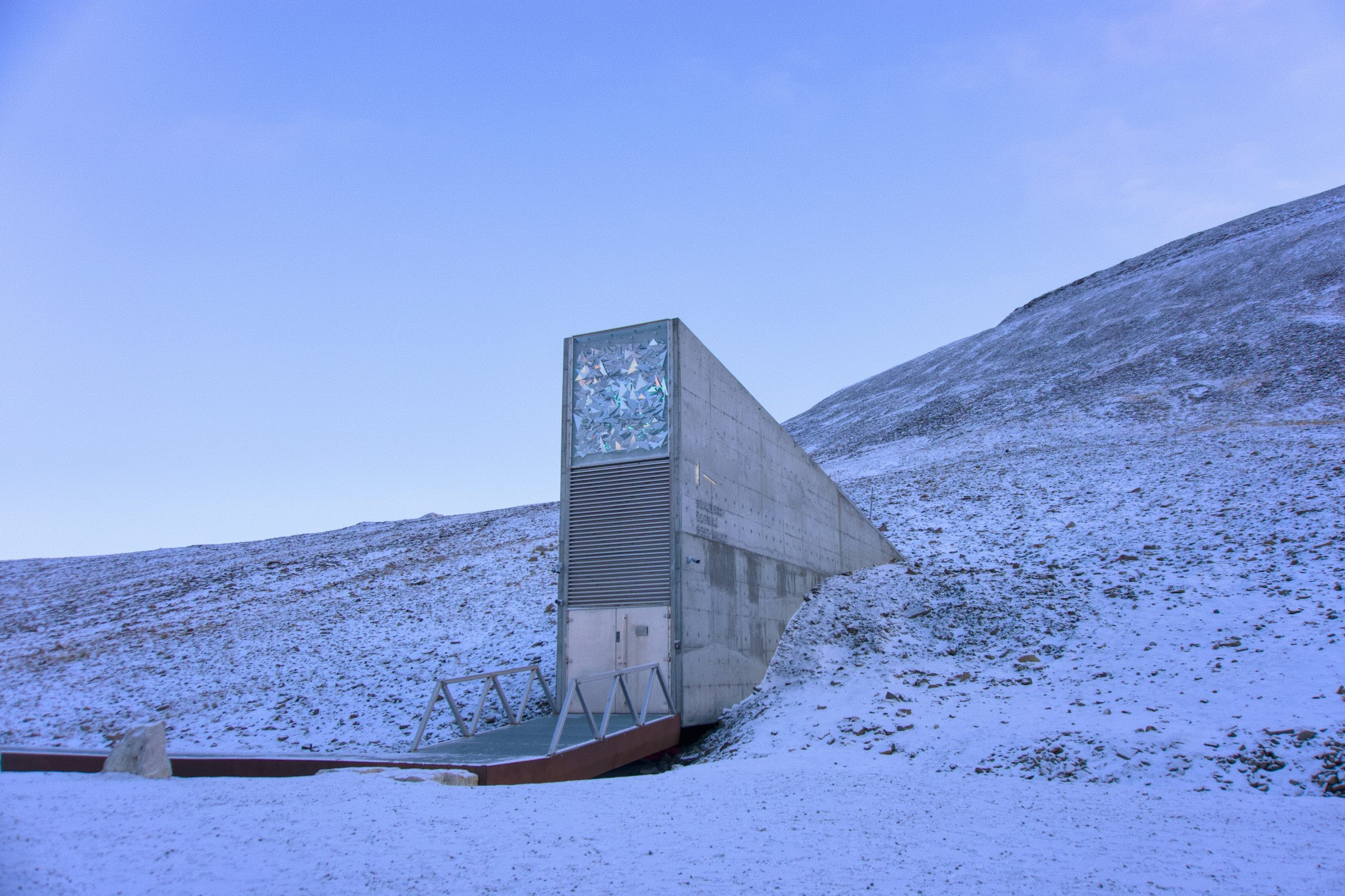At A3 Tech! Live 2025 in Munich, Osmium Data Group analysts Arjan Timmerman and Max Mortillaro had the opportunity to explore technological innovations from two companies in the archival storage space: Cerabyte and Piql.
Archival Storage: Tape and Beyond
In the pyramid of storage tiers, ultra-high performance storage is located at the very top as the pyramidion, delivering massive throughput and low latency at the highest cost. In contrast, massive capacity-driven workloads are located towards the base of the pyramid. At the very bottom is cold storage, defined by massive storage requirements and infrequent access patterns.
Archival storage is, in a way, a subset of cold storage, but is driven by specific requirements. In this domain, it is worth considering two main use cases: long-term archival for conservation purposes, and regulatory-mandated data retention. The former is simple and straightforward: there is no obligation to conserve any data other than what the institution (museums, national archives, national libraries, etc.) deems important for the sake of its own archival or conservation purposes.
The latter, however, is a much more complex landscape. A broad range of records are governed by regulatory bodies across multiple industry verticals. In addition, each country implements its own regulations and retention periods. For example, medical records have a typical retention period of 30 to 50 years, sometimes more. Nuclear industry records reach up to 100 years or can be permanent. In the pharmaceutical sector, clinical trial master files are usually kept for 25+ years. Furthermore, storage of these records often mandates data immutability.
Although those records constitute only a subset of an organization’s data, compliance with those requirements require the implementation of specific storage solutions. For several decades, tape storage has reigned supreme as the densest and most cost-effective storage media. Witness the majestic sight of an IBM System/360 9-track tape system, and ponder about the long-gone glory of the space race era: if you don’t feel a pleasant shiver run down your spine, you might not have a heart.
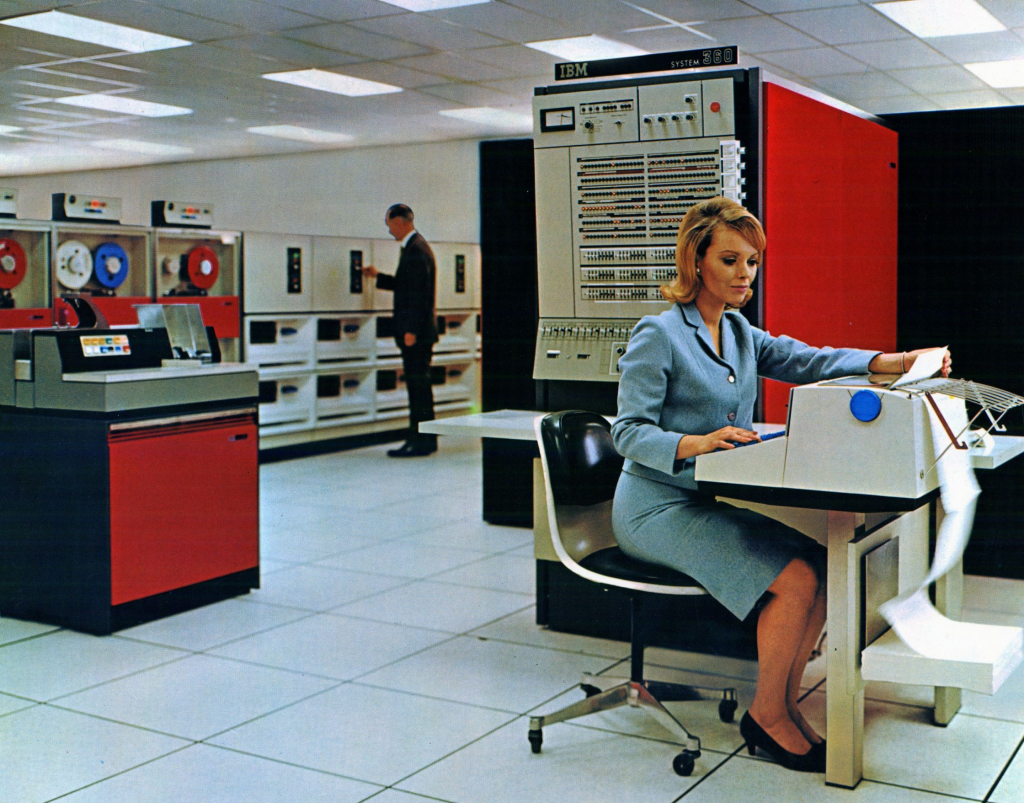
Fast forward to 2025: the LTO standard is now 25 years old, with LTO tapes designed for 15 to 30 years lifespan. However, operating tapes at scale for multi-decade periods has a sizable footprint impact, especially for multi-petabyte estates. Proponents of tape drives mention that when the right conditions are achieved (tape storage at specific temperatures / humidity levels), durability shouldn’t be an issue.
On another hand, innovators in this space claim that although laudable, tapes fall short on long-term durability, with the need to regularly replace drives and tapes, for a variety of reasons ranging from hardware obsolescence to cautionary measures. For example, even if a drive is rated for a 10 to 15 year lifespan, the possibility of finding such a drive in 10 years from now will likely be scarce, mandating premature replacement. The LTO consortium used to mitigate this risk by providing backwards tape compatibility at least all the way up to the LTO-9 standard.
Contenders thus claim that even if tape storage is the cheapest among all storage tiers, the overall TCO over the lifespan of the data (considering retention requirements) is still seen by them as too high. Let’s therefore explore what two of those contenders – Cerabyte and Piql – propose as alternatives.
Cerabyte
Cerabyte, a company founded in 2022 with offices in Germany and the USA, has the ambitious goal of developing an innovative storage media that should offer the lowest storage TCO with their Ceramic Nano Memory format.
The intent is to build storage that is “as durable as hieroglyphs” and resilient against a broad range of hazards, including heat and fire, UV light, EMP (electromagnetic pulse) bursts, radiation, water and moisture, and corrosion.
In practice, the Cerabyte solution currently consists of ultra-thin 9×9 cm glass sheets. Glass is the substrate material coated with a 10nm thin dark ceramic nanolayer, comprising only 50-100 atom layers.
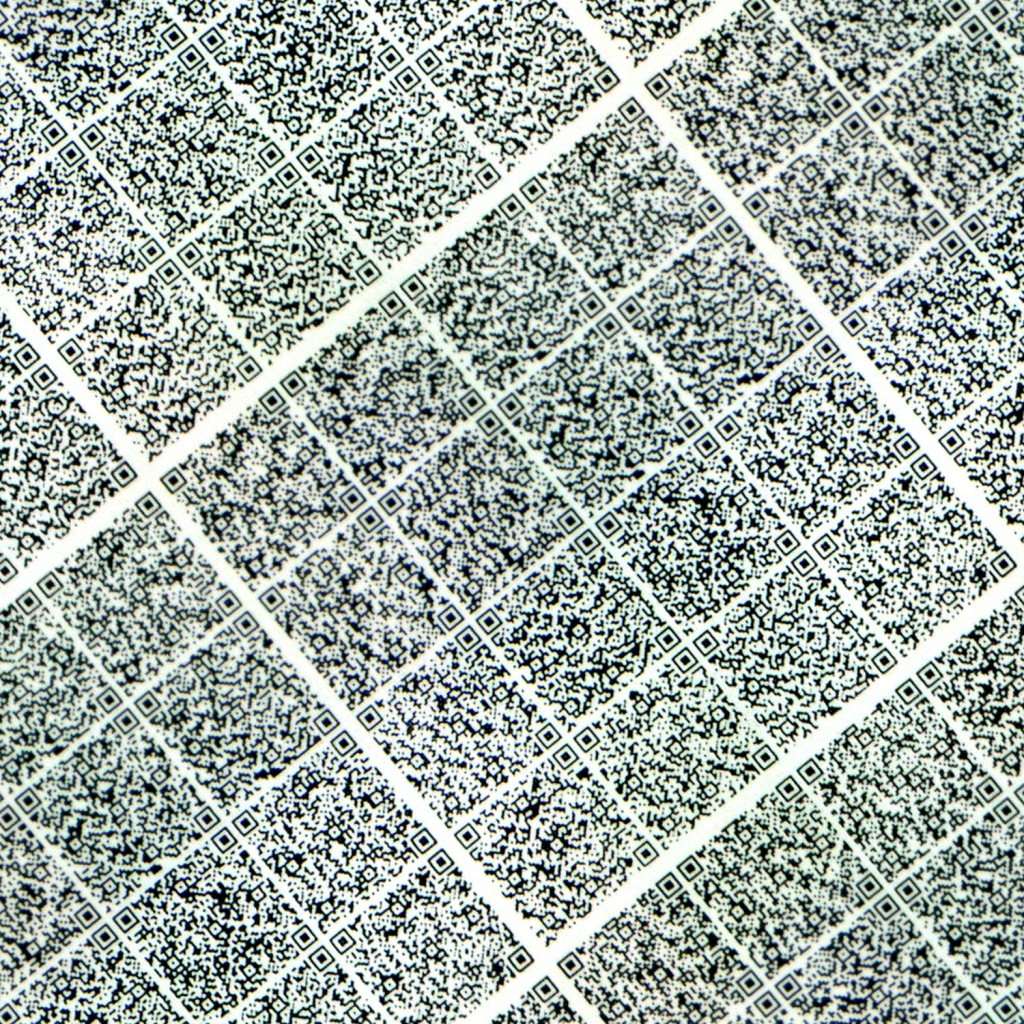
As described in Cerabyte’s white paper, the current pilot uses a laser beam in combination with digital mirror devices (DMD) to generate a laser beam matrix which permanently ablates the ceramic nano-layer, and writes up to 2,000,000 bits with one laser pulse.
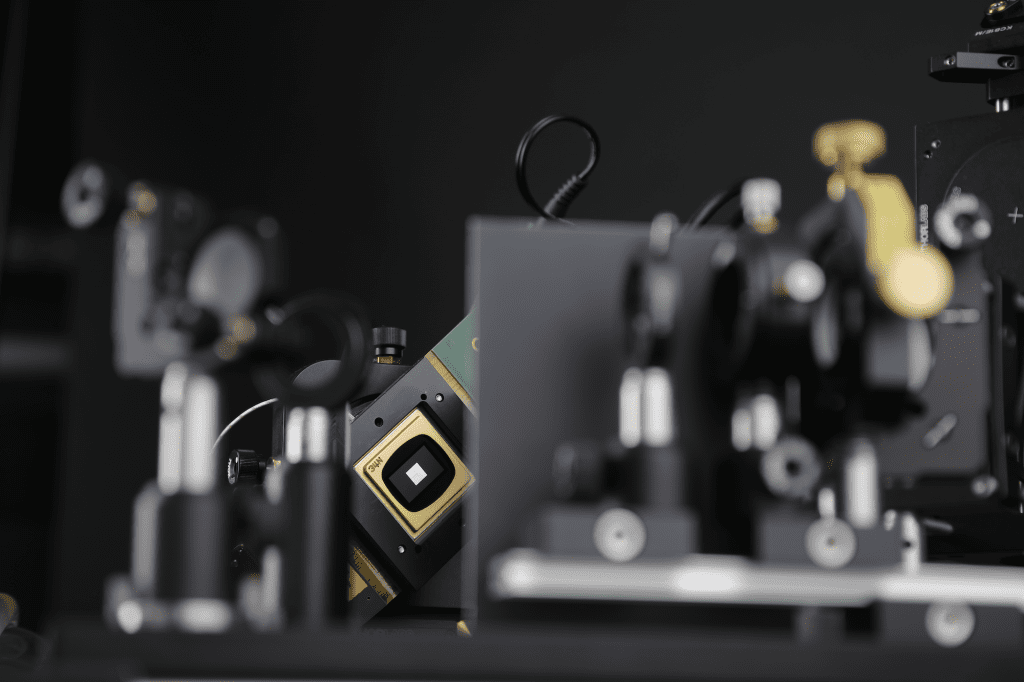
Current technology is based on laser beam matrix, a technology that expects to reach up to 1 GB/s write speeds before 2030. The roadmap envisions switching to a particle beam matrix around 2030, and achieve write speeds in the 1+ TB/s range.
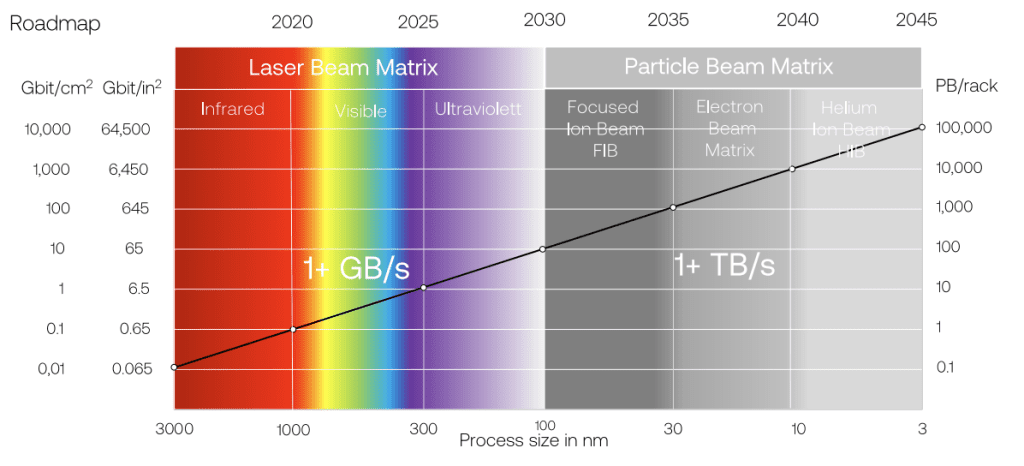
From a scalability and capacity perspective, the pilot system in 2025 achieves 1 PB total capacity and 100 MB/s, but as depicted below the company expects to make significant progress by 2027-28, scaling up to 20-40 PB, with speeds in the 250-1000 MB/s.

Also worth noting is that current pilot systems are based on GPUs to test error-correction mechanisms, while production implementations will rely on FPGAs in the future. Although GPUs provide flexibility for testing purposes, they currently limit throughput in the pilot system, a limitation that Cerabyte expects to lift in the near future.
Although the technology is in its early stages, the company is focused on the industrialization of components and manufacturing processes with its partners. Components / aspects being improved include media production, write modules, robotic libraries, display glass production & media coating, femtosecond laser & optical engineering, and modular tape libraries.
Currently, Cerabyte focuses on long term storage, but expects in the future to provide sufficient throughput and capacity for fast data readability and ingest.
Piql
Piql is a Norway-based company that provides “unique, unhackable, immutable data storage solutions and services”. Their solution is based on 35mm silver-hallide film, nearly the same media and format used in 35mm film cameras. The company claims their media is tested for 1000 years of longevity (other sources mention 500 years), probably enough to withstand the next audit before civilization returns to sticks and stones.
The solution, covered below, is fully productized with customers in the field.

Piql describes their format as self-contained and self-descriptive as well as migration free. The film is stored in a proprietary box which contains a long roll of film. It can be stored on-premises or in long term storage vaults, at the customers’ convenience.
The demo showcased a few frames, containing plain text instructions that can be enlarged via optical means, a visual representation of Da Vinci’s Joconda, a program to launch a TIFF image format viewer, and the image in high resolution TIFF format. Piql’s intent is to keep data and information accessible in its authentic form, without any extra technology.
The solution consists of four physical components:
- piqlFilm and PiqlBox- piqlFilm is the media itself,. It allows the storage of up to 120 GB per film, and allows storage in digital format (QR codes) and visual (images) at a microscopic resolution of 1180 line pairs per mm onto nano silver halides on ultra-stable PET base material. A combination of both digital data and visual images can be used. This film can then be stored inside a piqlBox that allows proper protection of data, including IP54 protection against mechanical damage and dust, as well as 890 kGy (kilo Geyger) resistance against extreme radiation. The company also allows sealing the piqlBox for extra protection against water, bacteria, fungus, etc.
- piqlWriter – the piqlWriter is a device designed to write data on piqlFilm. This machine is typically operated by Piql or its partners to deliver “piqlFilm-as-a-Service”, but is available for purchase for projects with massive storage requirements. The second generation of piqlWriter, generating 2000+ light pulses per second, provides a writing speed of 40 MB/s, equivalent to 20 frames per second, while writing 2 MB per frame.
- piqlReader – the piqlReader is a dedicated device capable of reading piqlFilm. It includes 405nm deep blue led, a high-res f/5.7 lens, and achieves capturing rates of up to 200,000 lines per second, up to 20 Gbps (2.5 GB/s) image acquisition speed, or 1 GB/s real-time GPU-based image processing/decoding.
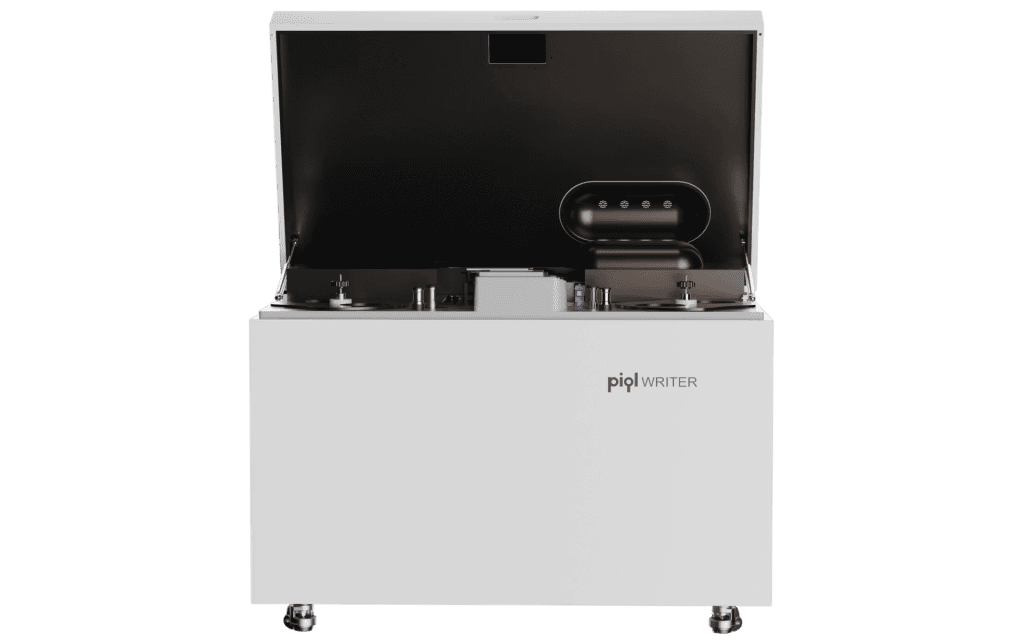
The data stored on the Piql ecosystem is managed via piqlConnect, a cloud-based data management portal that allows organizations to easily retrieve their data. It allows users to join or create multiple teams, for users involved in multiple projects, allows organizations to decide where and how their files are stored, and also gives the ability to perform data health checks.
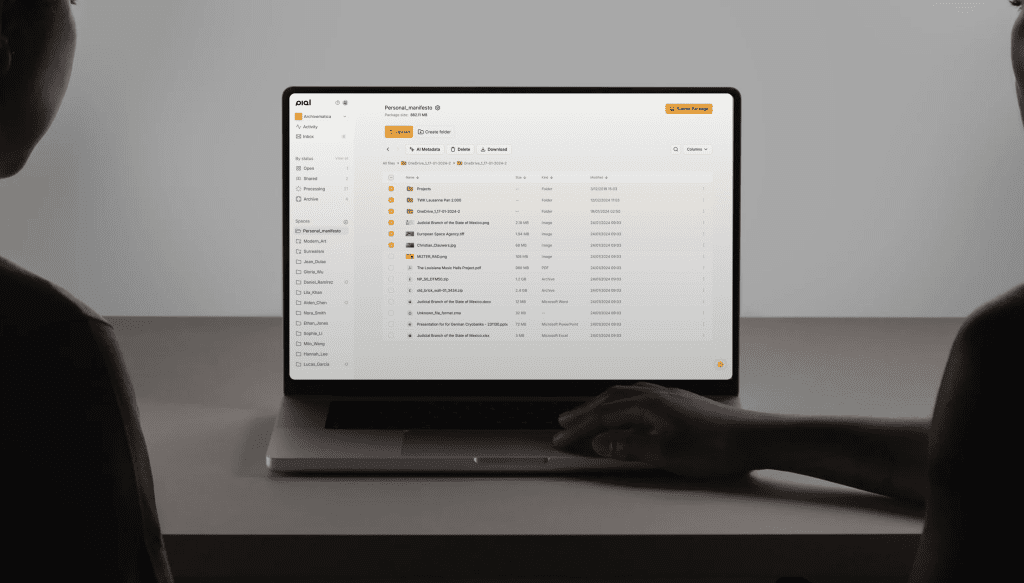
Alternative Technologies
Cerabyte and Piql are not alone in the development of alternative long term storage media solutions:
- 5D Optical Storage – this technology is “an experimental nanostructured glass for permanently recording digital data using a femtosecond laser process” according to Wikipedia. Data is stored in five dimensions related to tridimensional coordinates (location of the data) and two optical dimensions (size and orientation), hence the “5D” moniker. Several research teams and universities have worked on 5D optical disk concepts.
- HoloMem – a solution designed to be backwards-compatible with tape libraries. It replaces magnetic LTO tapes with a holographic, multi-layer ribbon enclosed in an LTO-compatible enclosure. Coupled with a holographic tape drive, this solution proposes up to 200TB density per tape and a 50+ year lifespan. Read more on HoloMem.
- DNA Storage – Several projects / initiatives exist, but appear to be mostly at the proof-of-concept stage. According to a Wikipedia article on the matter, read and write speeds are very limited, peaking 1 Mbps write speed in a 2019 experiment, while costs are deemed to be prohibitive based on currently existing technology.
The Osmium Perspective
As technology nerds, it is always exciting to witness new technologies rise up. However, when considering long term archival storage, technology, no matter its merits or unique properties, remains just an enabler to achieve specific goals.
Both Cerabyte and Piql offer immutable storage solutions that vastly differ in their implementation, practicality, and target use case. When reviewing both solutions, it was hard not to think about the often-abused reference to the battle between two standards: Betamax and VHS.
In this review, one solution, Cerabyte, promises a bright future at the cost of significant technological investments and a longer development roadmap, with an ecosystem that needs to be entirely built up. The other, Piql, almost surprises by its seemingly lo-fi approach with 35mm film, while also offering a fully productized solution that also includes a well-defined sales model, a partner program, and a data management solution.
Both solutions have their merits and specific audience. Based on our initial understanding, Cerabyte might be more appealing to hyperscalers and large data centers, collaborating with well-known founders, while Piql seems to have found its “goldilocks zone” with large institutions such as museums, national libraries, state-run archives, and some financial institutions.
Ultimately, use cases, regulations, and business needs will continue to shape the solutions in this area, since long-term storage essentially remains a data management, compliance, and governance topic. Nevertheless, Osmium Data Group is pleased by this modern interpretation of “Sumerian tablets vs. Egyptian hieroglyphs”, and has a fondness for 35mm film format. Osmium will continue following developments in this space.

